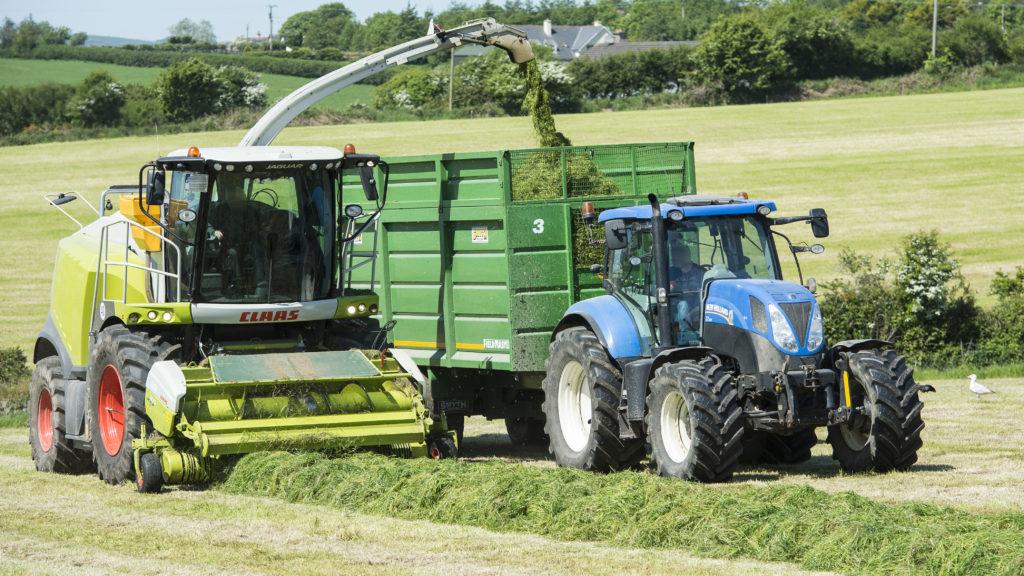Get a 24 hour weather forecast

Catherine Hurley
Recent grass silage tests that have been carried out have shown poor protein levels in the winter fodder in many cases, so much so that the feed may need to be supplemented when feeding certain groups of beef animals or dairy animals.
Often, silage ground has the poorest level of soil fertility according to studies, with much of the nutrients taken out at cutting not being replaced at an appropriate rate.
To help rectify this, forming a fertiliser plan on the back of your soil test results with the help of Inside Sales if needs be. It is impossible to make an accurate plan to correct your soil deficiencies without soil testing and are essential for the whole farm.
Although it costs money to increase fertility levels on low fertility soils, the returns in terms of grass production can be considerable. According to Teagasc, every extra tonne of grass grown increases profits by €173 per hectare.
| Dairygold Soil Sampling Service | If farmers sample soil themselves |
| €16.50 plus VAT (10 or more samples) | €13.47 plus VAT (10 or more samples |
| €18.00 plus VAT (less than 10 samples) | €14.97 plus VAT (less than 10 samples) |
Recent soil samples taken from farms and analysed by Dairygold show that although optimal soil fertility level have climbed year on year, less than half of soils tested in 2018/19 are in the optimum range in terms of pH, phosphorus (P) and potassium (K), which is Index 3 for P and K and a pH of >6.2.
Although lime is often seen as the cheapest form of fertiliser available, only half of drystock farms in the country have applied lime in the last 10 years according to Teagasc figures. Up to 20% of nitrogen (N) fertiliser will be lost where lime is deficient in the soil also reducing the efficiency of other artificial fertilisers and slurry.
Quoting local contractors, lime costs €24/tn spread. Spreading one tonne of lime per hectare raises the pH by .25 of an increment.
How much P and K do I need to spread?
According to Teagasc research, uptake required to grow 1t DM/ha of healthy sward of rye grass is 4kg/ha of P and 30kg/ha K. Thus, if a farmer plans to grow 15t DM/ha, the total uptake will be 60kg/ha of P and 450kg/ha of K.
Allowing for 80% utilisation of grass, these figures are then adjusted to 48kg/ha of P and 360kg/ha of K, this is before taking into consideration how much is being recycled back into the field by the cow.
Some 60% of P and 90% of K is recycled back into the field, meaning 40% of P and 10pc of K needs to be replaced in order to keep the levels right for optimum grass growth.
Based on these sums, the typical nutrient removal by grazing animals for soil fertility maintenance is 19kg/ha of P and 36kg/ha of K, at 12t DM/ha utilised, assuming grass indices are high.
When to apply P and K
Phosphorus should be spread in earlier spring to achieve the best results, with a target to get between 50-75% of the annual P requirement applied in the first two rounds of fertiliser. The remaining P should then be spread little and often throughout the summer months.
Applying K in spring is not as critical as applying P according to studies. Although they usually go hand in hand when spreading, try to avoid spreading excess K in spring as it can have a negative effect on the uptake of magnesium and resulting in the risk of grass tetany.
The impact of cutting rather than grazing
Consider growing silage like a crop, understand it has a higher nutrient demand compared to grazing and needs to be nourished adequately to achieve its full potential.
The P:K ratio on a grazed field is approximately 1:2, which reflects common NPK products. However, for silage ground it is closer to 1:7 and the requirement for and P and K is a lot higher, being 48kg/ha of P and 360kg/ha of K.